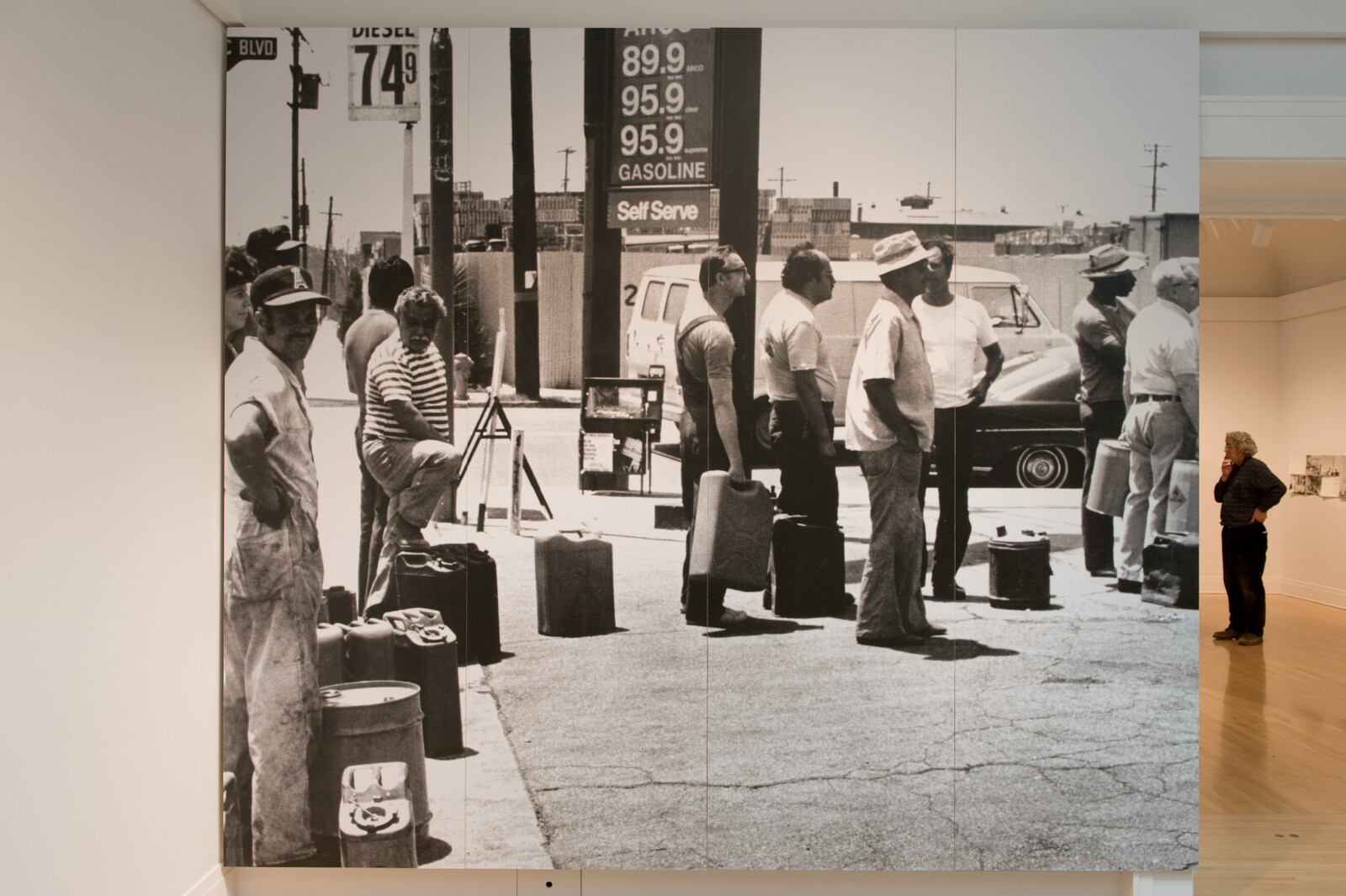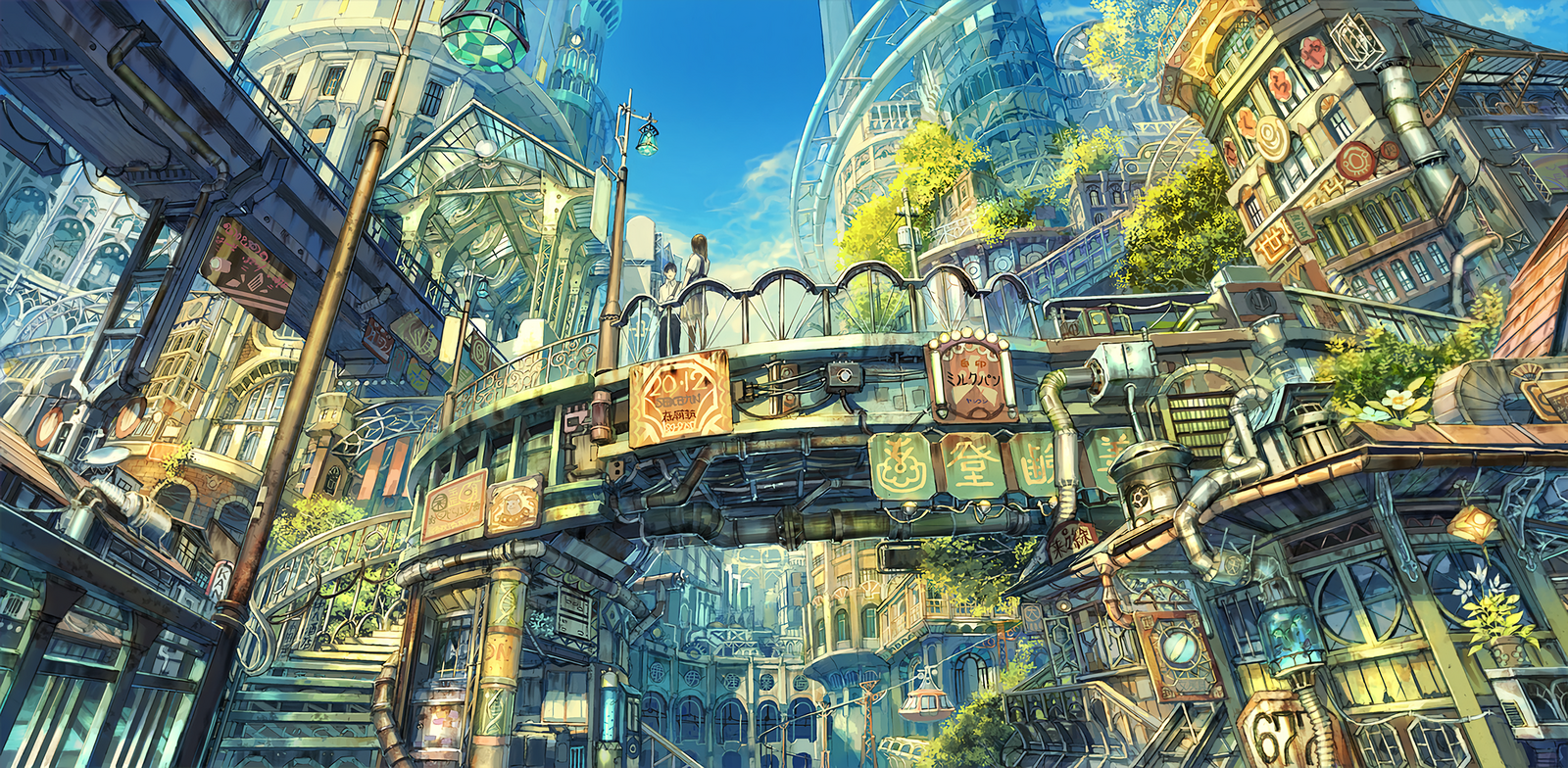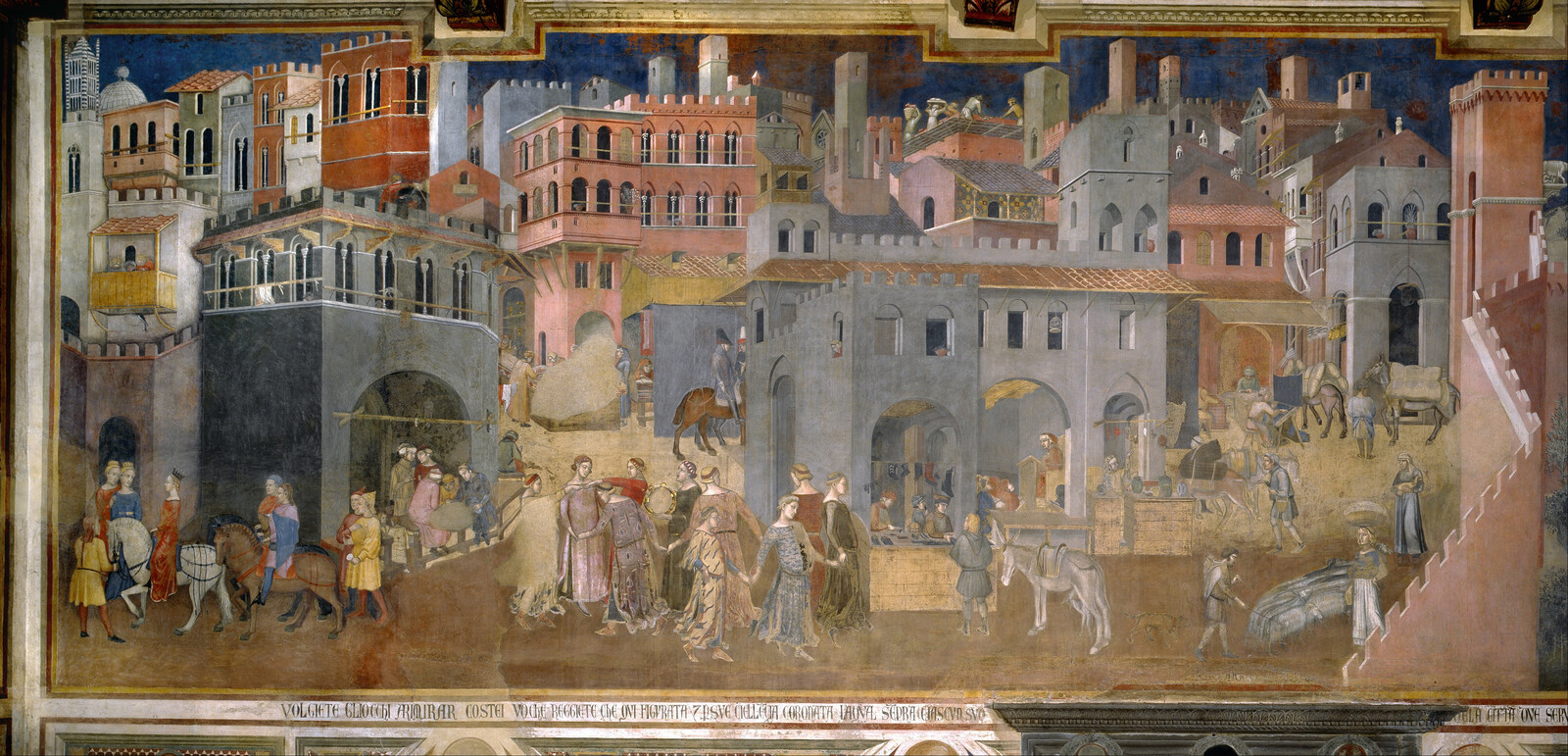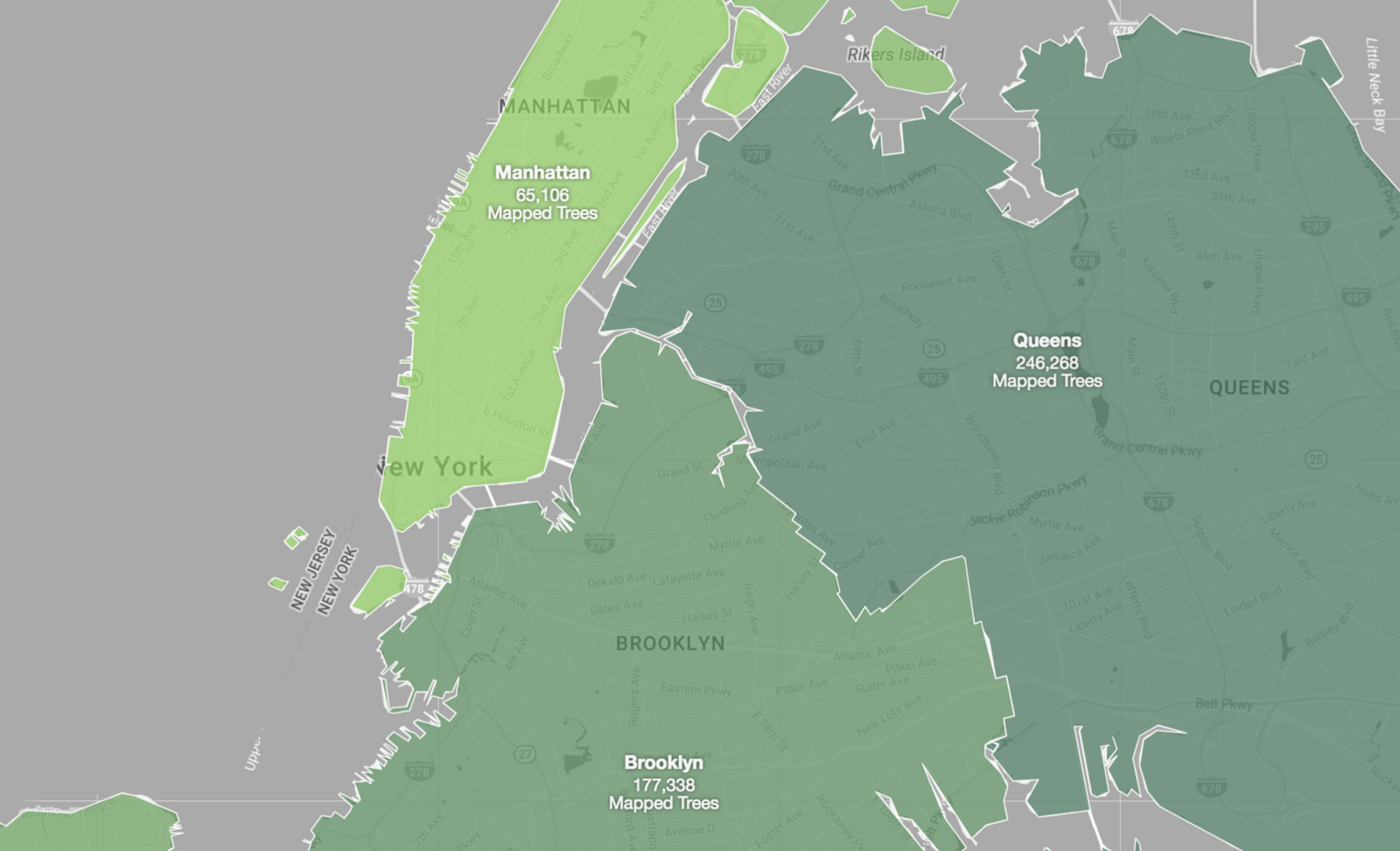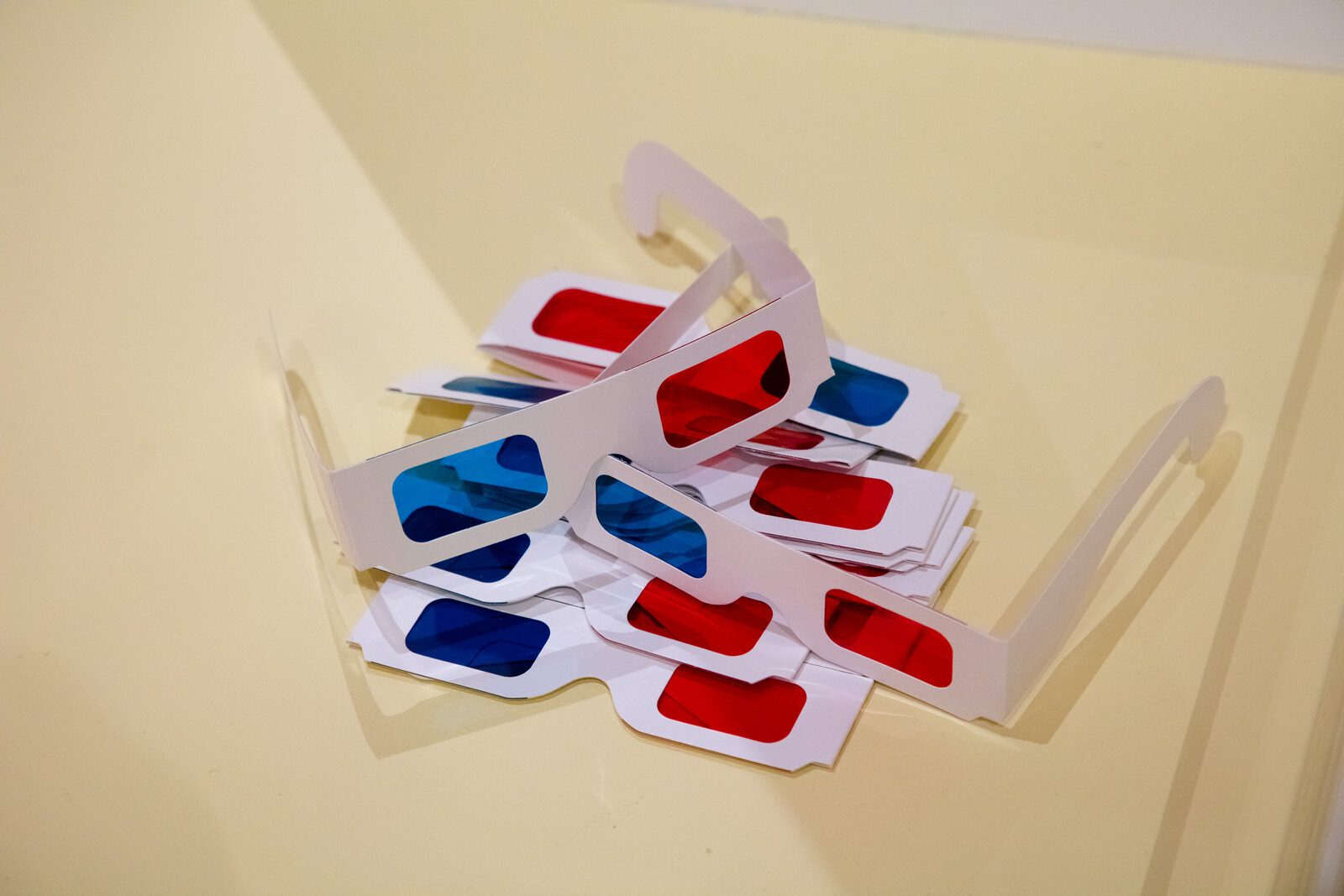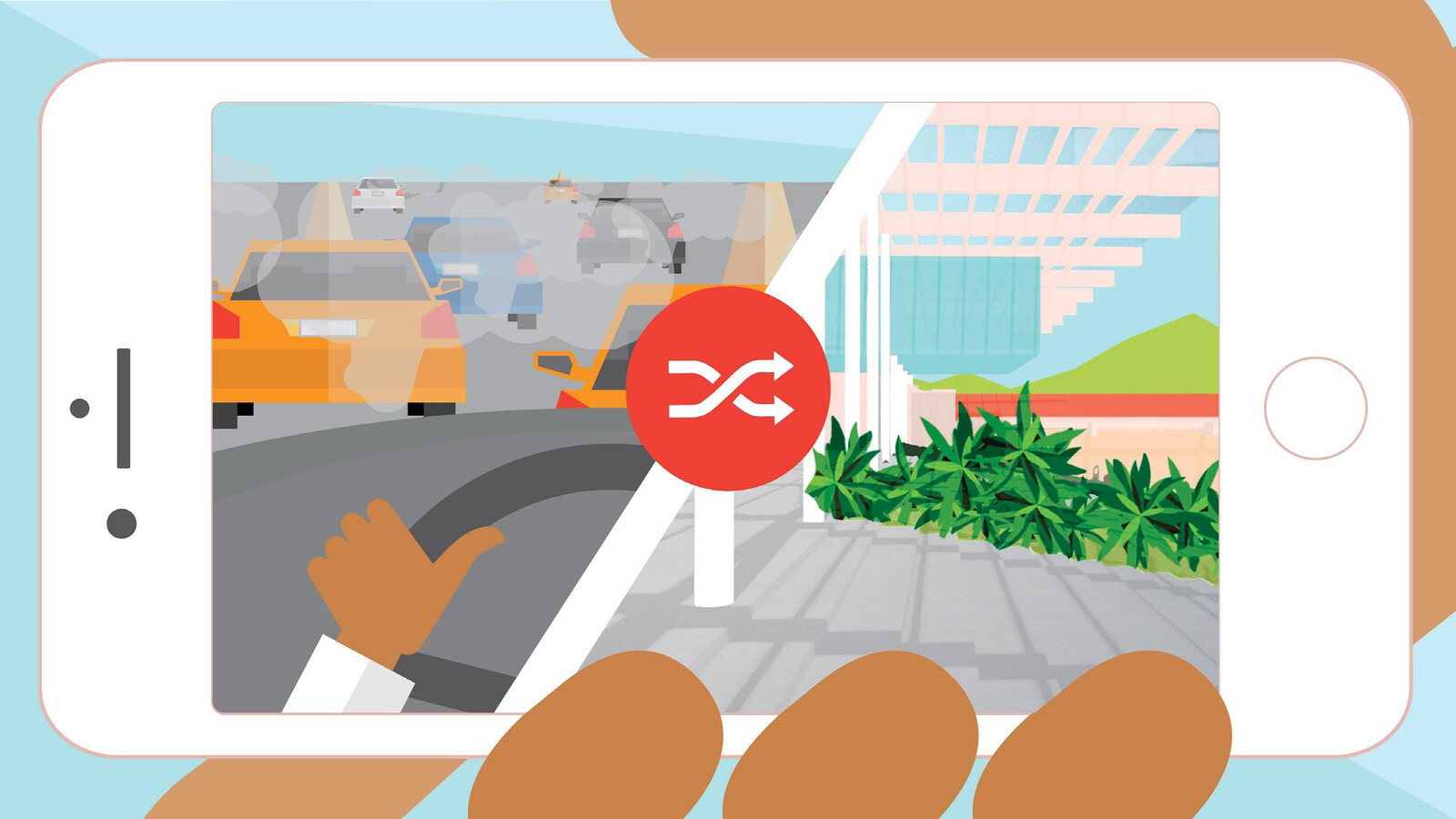The corner lot at 550 West 20th Street wears all the markers of a disused prison, because it is one. Somewhere else, in the media ether of do-good development, a press release declares this property “The Women’s Building.” The rhetorical act anticipates a project of architectural renovation, avowing from the outset to “turn a place of women’s confinement and pain” into a place of women’s empowerment. In its Vimeo version, Gloria Steinem appears to affirm this project as a deferred feminist dream of the 1970s. “It is so symbolic and important for us to take this building—the walls of which, if they could talk, would tell us of many injustices—and make it a building that symbolizes and houses freedom,” she tells us. “It is long overdue. It has been wanted and desired and cherished and looked forward to for decades.”1 Her soundbyte is echoed by a series of testimonies from worthy organizations, representatives appointed to demonstrate which causes might benefit from the specter, if not the reality, of The Women’s Building. Ai-Jen Poo, Director of the National Domestic Workers Alliance, suggests the important material support a building like this could bring:
Having the ability to share a space with other women’s organizations and having the support of the city and the state to do that would be really game changing. It means that we could focus on the work, the mission of our organization as opposed to expending all this energy struggling to survive and keep the doors open and the lights on.2
When women-focused non-profits are asked what they most need to support their activities, they often respond with “space.” It’s kind of an obvious lesson no one seemed to learn from Occupy, or from more than a century of post-industrial labor organizing, squatting, sitting in, and assembling together. Social justice and advocacy organizations need space to manifest a more equitable political future. It’s more than just a logistical question, though, but increasingly one of funding. Such organizations often attempt to weather the complex process of formalizing as tax-exempt entities. As a result, they must discern a mode of working on structural issues within the structure of capital, as the good vessels for public or private money or no money at all. Space (however its divided, but surely with amenities like heat, plumbing, wifi, tables, and chairs to gather ‘round) comes at cost. Especially in Manhattan, there is no obvious way outside of the schema of real estate to allocate spatial resources. The Women’s Building, as a property, acts as the interceding vessel, more amenable to investment, especially as the project presents itself as a philanthropic development. And so, the project refigures (rentable) space as a currency for correcting the imbricated injustices of gender-based violence, racism, public disinvestment, mass incarceration, and other structural issues that weigh disproportionately on women.
Reborn as a hub of activism and engagement, The Women’s Building will offer social justice leaders the resources and support they need to drive critical change. It’s a workspace—and more. It will rise as a vertical neighborhood, designed to spark serendipitous interactions, build partnerships, create networks and grow sustainable solutions. It will bring diverse organizations together, as they envision and build a better world for girls and women, around the globe.3
Despite its marketing, The Women’s Building does not represent a revolutionary moment in the struggle for “feminist space,” in the sense that it is taken by collective will or rescued from the carceral estate. Instead, it is a rather well-financed maintenance act of irredeemable state property. In 2014, Bayview Correctional Facility, a women’s prison in Chelsea one block from the High Line, was relinquished to private stewardship. Empire State Development Corporation (ESD), New York’s public property developer, issued a Request for Proposals (RFP) for some combination of (1) purchase, (2) long-term lease, and (3) adaptive reuse of the historic, but un-landmarked building at 550 West 20th Street. In late 2015, ESD granted a fifty-year lease, renewable for an additional forty-nine years to the NoVo Foundation.4 It was a face-saving deal for the Empire State, which avoided some Trump-style acquisition amid the ascendant property values of the Chelsea neighborhood. Governor Cuomo held a press conference to announce the project as if it were a purely public initiative; everyone is happy to claim some responsibility for this altruistic development.5
The Women’s Building is not a public project, but rather a public-facing initiative of the NoVo Foundation, a private philanthropic organization that sets as its mission the “transformation from a world of domination and exploitation to one of collaboration and partnership.” The foundation’s belief in “Radical Hope” and half a billion dollars in net assets propel action on issues affecting women and girls, education, and indigenous communities.6 Founded by Jennifer and Peter Buffett, the daughter-in-law and son of Warren Buffett, and directed by the more visible Pamela Shifman, NoVo has proposed The Women’s Building as its first foray into property development. The project is pursued in the spirit of Warren Buffet’s investment philosophy to seek out “undervalued assets” (ostensibly both the prison and the women that might occupy it).7 The Foundation will fund the design and construction of the building, after which it will need to establish its own revenue streams to ensure its solvency (presumably by charging rent or collecting membership dues).8 To manage the acquisition of the lease and the ensuing architectural competition, NoVo partnered with the Goren Group, a women-owned real estate developer with a portfolio that includes other high-profile preservation projects, though in 2016, Goren departed from the project.9
The future promised by The Women’s Building is predicated almost entirely on the transformation of the former Bayview Correctional Facility, a prison and work-release facility for women that was in operation from 1974 until 2012, when it was evacuated in the event of Hurricane Sandy. No one called for the end of this prison. A reputation for hosting the highest rates of sexual abuse was not enough to shutter Bayview.10 Rather, fourteen feet of seawater expelled its inmates to upstate facilities, and the cost of repairing the damage—over $600,000—proved too high for the State Department of Corrections. When Governor Cuomo surrendered the building and absolved the state of its responsibility to care for those in its custody, he still claimed it as a victory in his campaign for criminal justice reform.11 The Women championed by the building’s reprogramming do not apparently include the 153 inmates once incarcerated at Bayview. They were sent upstate to Westchester or Dutchess County facilities, or even further north to Albion, where they remained incarcerated, but further from their home boroughs.
In August of 2016, NoVo issued their own RFP for women-led design teams to take on the work of adaptive-reuse. By November, the advisory committee had selected an all-female team from Deborah Berke Partners to lend a sensitive touch to the block already marked by Jean Nouvel’s luxury residences and Frank Gehry’s corporate real estate. The renderings that accompanied the announcement are not recognizable as renderings, as they make no marked change to the buildings’ exterior façade. Trained eyes might notice that the building’s former blue chain-link roof structure had been replaced with glazing, which also appears in layers over the existing windows at the piano nobile, suggesting a narrow terrace. The secure corner entrance has also been given some transparency, from which a bright white stair hints at a new interior life. Instead of major architectural interventions, the project largely revolves around reprogramming. Change the world, but not too much; we have to remember the past we’re leaving behind. Inside of Bayview’s walls, The Women’s Building will host a healing garden, an art gallery, childcare facilities, and partially subsidized office space for a number of women’s advocacy groups, non-profits, and select for-profit enterprises.12
The Women’s Building is indeed a story about the architectural and moral rehabilitation of carceral property in New York. Yet, despite its emphasis on the building itself, The Women’s Building perhaps more clearly registers as an ambition for transformative justice.13 In other words, The Women’s Building is about the imagined capacity of buildings to reform the structural evils of a seemingly outmoded patriarchal order, the social ills of white supremacy, and the cycles of impoverishment that submit women to precarity, abuse, and detention. In the absence of design drawings, the public is invited to fill in the lines of this more just future as it is articulated across the extensive media—the website, videos, interviews, press conferences, listening sessions, block parties, and Annie Leibovitz exhibitions—that make The Women’s Building already a kind of reality. In lieu of Deborah Berke’s design plans—something NoVo has not released, even three years after a very public competition—a closer examination of the history of 550 West 20th Street can start to register the problematics of both preserving and rehabilitating carceral architecture in a moral schema that relies as much on feminist will as it does on the philanthropic investment necessary to realize a feminist future. We need this future, and it is difficult to critique a project that is so earnestly trying to manifest it, and in a demonstrably collaborative way. How this future is designed is not a separate question from who owns or occupies a building that stands for, if not belongs to, “The Women.” To the extent that this remains a rhetorical exercise, the client-owner’s claim to program a space for women that does not yet exist for them should be carefully considered beyond its good intent.
The Women’s Buildings
We are meant to be swayed by the futurity of The Women’s Building, an as-yet unrealized resource for feminism’s fourth wave. But The Women’s Building is not a new prospect, not even for New York City. In 1971, the same year Gloria Steinem published the preview issue of Ms. from the offices of New York magazine, a group of women—mainly lesbian activists—broke into a disused former city school annex on 5th Street in the East Village and declared it “The Women’s Building.”14 Their twelve-day occupation, which involved securing new locks to the gates, kicking out the “winos and junkies,” and restoring heat to spaces stripped of their copper pipes, was a necessarily architectural act. To facilitate their growing meetings held inside the unfurnished space, the organizers enlisted someone to help them repair the furnace. Meanwhile, the space—sealed in with plastic tarps stapled to the window frames—was warmed by a kerosene-fueled Mister Heater. Their provisional improvements included crossing out the heater’s “M” for an “S,” as Liza Cowan recalls in her 1992 history of the event.15 Sister Heater and as many as two hundred women deliberated over the possible services that their newly acquired space could host: a food co-op, a clinic, childcare, or art workshops. When the city became aware of their efforts to institute such a center, officials tried to negotiate with them. Mayor Lindsay offered to let them stay if they agreed to supervise women who received public assistance—his interpretation of women-focused services—but the mostly white occupiers refused to surveil women of color in the name of the proper allocation of state resources. They remained in protest and were subsequently arrested, just short of two weeks in The Women’s Building.

Flyer announcing The Women’s Building at 330 E. 5th Street: “This building has been taken over by women for the use of women.”

Safety procedures for The Women’s Building at 330 E. 5th Street, January, 1971.

Women occupiers photographed smiling as they are forcibly removed from The Women’s Building on 5th street, in the New York Times, January 14, 1971. © The New York Times.
Flyer announcing The Women’s Building at 330 E. 5th Street: “This building has been taken over by women for the use of women.”
In the same year, on International Women’s Day, one hundred women in Cambridge, Massachusetts took over a former knitting factory at 888 Memorial Drive, a property that had been acquired by Harvard as part of the University’s expansion.16 By 1970, the factory was scheduled for demolition to make way for more student housing. With the support of the Riverside Planning Committee, which had also performed actions against the University’s incursion into the neighborhood, demonstrators stormed the building and declared it a “Liberated Women’s Center.” It sought to provide community resources like healthcare and low-income housing to all those displaced by Harvard.17 For ten days they held the space, teaching self-defense classes, offering childcare, cooking, organizing, and coming out as lesbians, until they were forced by court order to leave the premises. But by that time, they had raised enough money to legally acquire their own property elsewhere. The action is credited with establishing the longest-running women’s center in the country, the Cambridge Women’s Center.18


Organizers claim a Harvard-owned building as The Women’s Center. Credit: 888 Women’s History Project.
On the West Coast, other enduring actions were taking place. Judy Chicago established the Feminist Art Program (FAP) at Fresno State University in 1970, and initiated a version of the program with Miriam Schapiro in 1971 at the California Institute of the Arts (CalArts). The first project at CalArts was Womanhouse, a building-scale art exhibition and performance space. The idea took inspiration from The Woman’s Building at the 1893 Columbian Exposition in Chicago, an exhibition hall designed by Sophia Hayden, the first female graduate of MIT’s architecture program in 1890, and built exclusively to house women’s art and handicraft.19 Like the 1893 Woman’s Building, Womanhouse was conceived as a space built by and for women. To realize that concept, Chicago, Schapiro, and their cohort of twenty students and collaborators turned to 533 North Mariposa Street, an unoccupied old mansion in an unsavory part of Hollywood.
The “donation” of the house to the women of FAP is somewhat opaque in the recorded history of Womanhouse. It seems that the owner, Amanda Psalter, an “eccentric” old woman whose name Chicago and co. discovered in a county records inquiry, could not be located to permit the occupation of her abandoned home. Eventually, her family granted the rent-free lease of the seventeen-room home when they learned it could be claimed as a tax deduction.20 The terms of the lease stipulated a three-month duration of the project, after which the house would be demolished. Overall-clad participants of the Feminist Art Program took their tools to the property to begin the arduous process of unassisted construction in November of 1971, and finished in January 1972, after which time it opened to the public. They made significant architectural interventions in the building, not only working on the space as artistic practice, but repairing and replacing its walls, windows, and flooring to make their occupation possible. Room-scaled installations highlighted the material realities of women’s domestic lives, with notable contributions from Faith Wilding, who joined Chicago, Schapiro, and the students. Over the course of the exhibition’s six-week run, the space functioned as a seemingly unprecedented site for feminist action, performance, and expression.
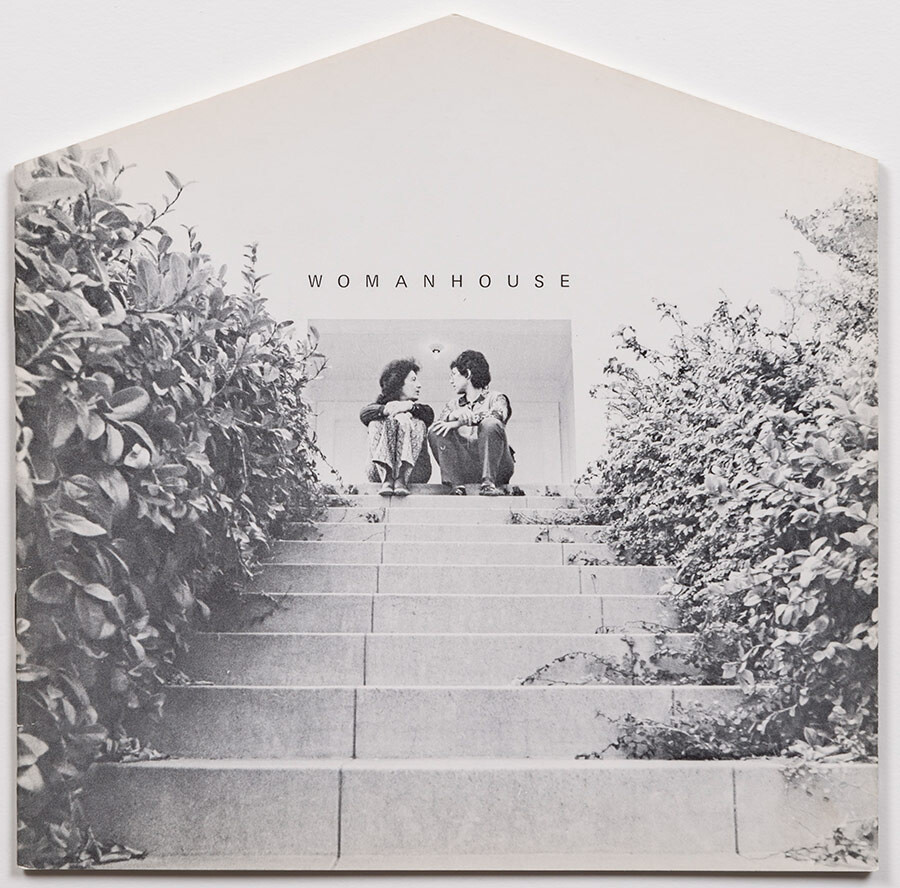
The cover image for the Womanhouse catalogue, designed by Sheila de Bretteville, a co-founder of the Spring Street Woman’s Building.
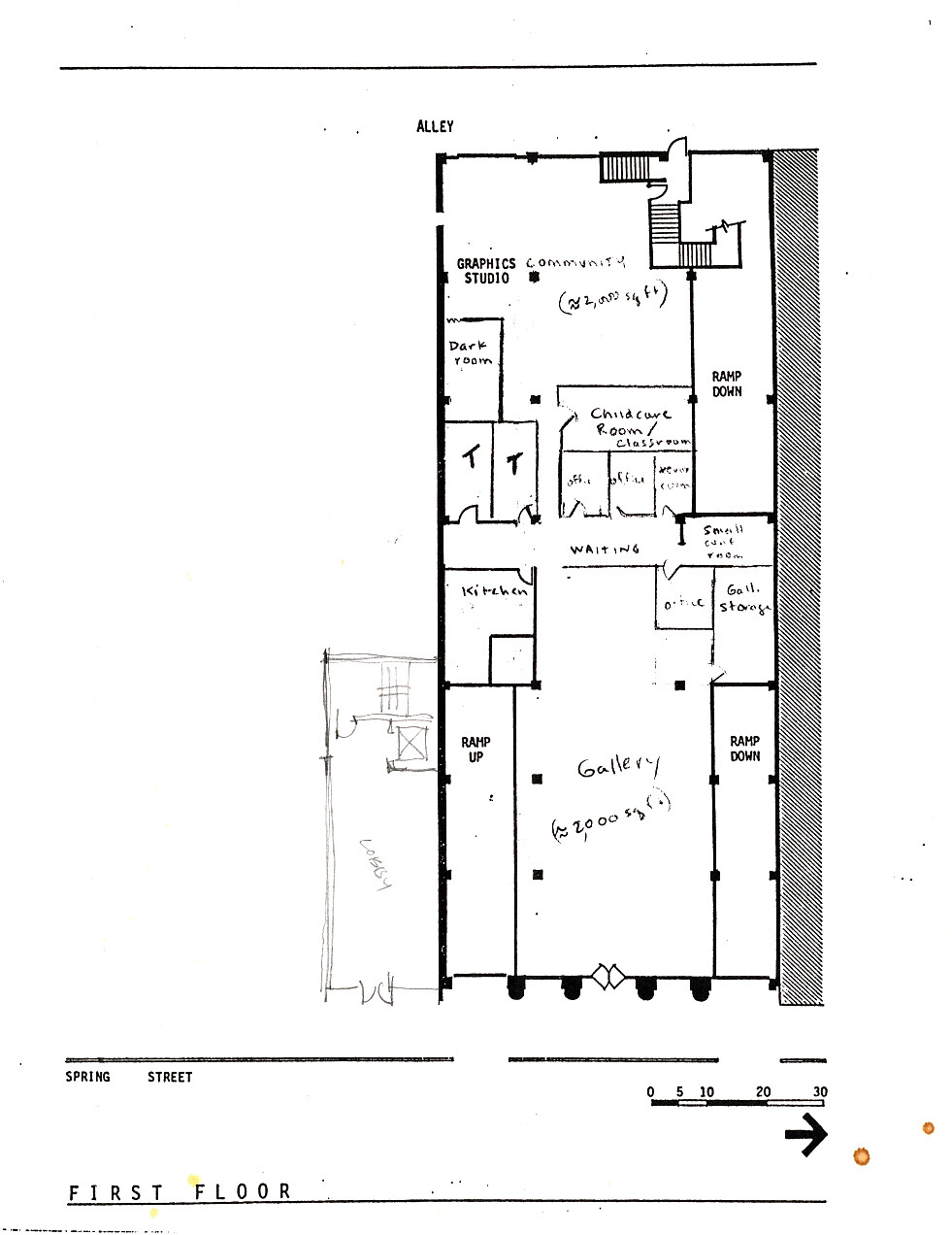
A first-floor plan for The Woman’s Building in Los Angeles, a renovation designed in 1985 by the short-lived architecture office Dubnoff and Hayden (comprised of Ena Dubnoff and Dolores Hayden).
The cover image for the Womanhouse catalogue, designed by Sheila de Bretteville, a co-founder of the Spring Street Woman’s Building.
In 1973, another building action was planned in Los Angeles by a cohort that also included Judy Chicago, as well as the graphic designer Sheila Levrant de Bretteville and art historian Arlene Raven. It opened as the Feminist Studio Workshop, an independent school that primarily trained women in the visual arts, but also gave space to second-wave feminist discourses as they cohered around the identity of the woman artist. The effort to make a space to support (and not only exhibit) them resulted in a more institutional, cultural epicenter for feminist art-making and consciousness-raising, which also hosted offices for the National Organization for Women, a women’s travel agency, a coffee shop, and a bookstore. In 1975, the Feminist Studio Workshop made a more permanent home as The Woman’s Building in a former Standard Oil building on Spring Street, and a proposed renovation was designed in 1985–1986 by architects Ena Dubnoff and Dolores Hayden, who had collaborated on an affordable housing project in Los Angeles a year earlier.21 In addition to studio and performance spaces, their plan indicates other support programming, like childcare and cooking spaces. As Hayden recollects in Redesigning the American Dream: The Future of Housing, Work, and Family Life:
In the process of domesticating public space, cultural institutions that exist somewhere between the private domain and the public domain play a key role… The Woman’s Building was designed to create a political and cultural bridge between public and private life.22
The Women’s Building in San Francisco’s Mission district was also established in the political terrain between private life and public womanhood, and in the same narrow timeline, in 1971. It is the only Women’s Building to remain in operation to this day, and continues to run programming and incubate women-focused organizations within the muraled walls of the old Sons of Norway meeting hall it acquired in 1979. As a kind of institutional intermediary between eras of feminist organizing, its executive director, Teresa Mejía, is included in the “Advisory Circle” for NoVo’s Women’s Building.23
New York’s new Women’s Building marks the historical moment of early 1970s feminist space-making most easily by the appearance of an aged Gloria Steinem—a kind of frontwoman for the project, but not a Circle member or participant in any official capacity. This historical arc, figured by Steinem as a deferred feminist aspiration, is consistently referenced in NoVo press communications to illustrate the most satisfying future for Bayview Correctional Facility, an institution which operated nearly as long as the San Francisco Women’s Building. In NoVo-produced videos and articles narrating the foundation’s plans for the prison, former inmates are literally handed the keys to their old cells and to the front doors in a symbolic gesture of emancipation, as well as some sort of visual testament to the project’s commitment to working against the rising tide of female incarceration.24 Former inmates have also been invited to join the Advisory Circle and to weigh in on the kind of programming that might have prevented their own time spent inside this building for women.


Rusti Miller-Hill, a former inmate of the Bayview Correctional Facility, looking at the key that was used to lock her inside her cell. Source: Damon Dahlen/Huffington Post.
The ethic of transformation lies at the heart of this project, and more broadly, NoVo’s mission. But there is an argument for transformative justice here—to relocate the social project of justice outside of the carceral estate—that is underserved by the symbolic act of “reclaiming” Bayview, as NoVo puts it. Bayview, like other American prisons, is an architecture attuned to disciplining its criminal subjects rather than correcting the structures of inequality that have produced exponential increases in female incarcerated populations over the last several decades in the US.25 During its operation as a rehabilitative institution, the prison harbored some abhorrent conditions for its inmates, including the deprivation of proper medical attention, enough sanitary products, and more vitally, protection against the sexual advances of male officers. The programmatic specificity of the building to house women in state custody is elided by the sacrosanct posture of The Women’s Building as a space reprogrammed for women’s liberation—the work of social and transformative justice that must still be performed inside of a correctional facility. Even if the prison is reassigned to better uses, the memory of its abuses are retained by preserving the very aesthetics of discipline. This fetish for rehabilitated carceral architecture is strangely mirrored in the design of the “humane prison,” as Monica Mohapatra describes. She argues that the institution of the prison cannot be reformed by architectural intervention; it is only re-branded.26 As a project of transformation that is necessarily supported by private capital as opposed to any deliberate reconfiguration of the state’s criminal justice system, The Women’s Building cannot adequately address the state of mass incarceration in the way that it imagines.

YMCAs at their corner sites, designed by “specialists” Shattuck and Hussey, 1904–1916. Included in Paula Lupkin’s Manhood Factories.

Seamen’s House, shown with vertical marquee ca. 1939–1941. Source: New York City Municipal Archives, DOF: Manhattan 1940s Tax Photos.
YMCAs at their corner sites, designed by “specialists” Shattuck and Hussey, 1904–1916. Included in Paula Lupkin’s Manhood Factories.
Manhood Factories
The building that lived the last half-century as a women’s prison was originally constructed for the housing and social improvement of men. Any adaptive reuse of Bayview Correctional Facility should reckon with the fact that it was itself the result of a previous architectural rehabilitation of another disciplinary institution, the Seamen’s House YMCA. This is, at least, the history that the Chelsea Land Use Committee of Manhattan’s District 4 would like to see preserved: its Art Deco provenance. The Seamen’s House was designed by Shreve Lamb and Harmon, who were completing the Empire State Building at the same time, at the peak of the Depression. This particular YMCA was erected to house navy sailors and merchant marines who were no longer at war and faced a scarcity of work.27 The building accommodated the seamen as productive, even upwardly mobile workers, providing them with the amenities required to develop themselves for this social climb. All of those spaces typical of the YMCA at that time—the barbershop, tailor, cafeteria, gymnasium, pool, game room, social room, and, of course, the chapel—were contained within a bricked façade elevated by arduously crafted mosaics, wrought iron, and detailed stonework. The commitment of the Young Men’s Christian Association (YMCA) to the working man is evidenced in the construction of its dignified corner estates, while the aesthetic of the institutional architecture embraced the marriage of religion both to commerce and to broader nation-building efforts in early twentieth century cities.28 In addition to the YMCA’s history of supporting American war efforts, dating as far back as the Civil War, its alliances with the American Seamen’s Friends Society and the Seamen’s Christian Association informed the approach to the program, administration, and staffing of the Seamen’s House, which serviced a large percentage of the “crews of the estimated 10,000 passenger and freight ships that docked in New York harbor each year.”29
As a special kind of YMCA, the Seamen’s House was set up to protect a venerable population from destitution and degeneracy.30 As a temporary home for seamen (and the exceptional woman) outside of the disciplinary structure of the navy, the building was designed to organize subjects’ stays on land in a way that reflected their status at sea: sleeping quarters, lockers, toilets, and social parlors were constructed on separate floors for “Male Help,” “Female Help,” “Matrons” (maids), “Stewardesses,” “Ladies,” “Boys,” “Women Officers,” and “Men Officers.”31 The plans, prepared by the architects with contributions from the YMCA’s in-house Architectural Bureau, integrated women by precisely classifying the intended occupant of each space. In hand-drafted labels, women were identified as “female” when performing less valuable forms of labor like ironing, washing, cleaning; “ladies” when bathing; and “women” when commanding as officers. Its logic of gender segregation followed from the military’s ordered approach to space and socialization; a model that would later accommodate the rehabilitation of minimum security inmates.

YMCA values in mosaic, designed by Shreve, Lamb and Harmon, 1930. Source: Avery Architecture & Fine Arts Library Drawings Archive.

Sixth-floor plan of the Seaman’s House. Source: Avery Architecture & Fine Arts Library Drawings Archive.
YMCA values in mosaic, designed by Shreve, Lamb and Harmon, 1930. Source: Avery Architecture & Fine Arts Library Drawings Archive.
The single-celled dorm rooms complete with private toilets, the small office units that populated the sixth, seventh, and eight stories to house officers, and the open floor plans that included beds for the “help,” all lent themselves to the Bayview prison refit. The reformation of the spirit, mind, and body at the heart of the YMCA project, and the prison’s supposed aim to reform, shared a belief in exercising the body to free the mind; that is, only under the supervision of some higher authority (God, a warden, or a YMCA residential manager). This regime of moral supervision is particularly apparent in the natatorium, a fancifully mosaicked pool that was open to men and boys and supervised by male attendants. That said, the hierarchical delineation of spaces in the Seamen’s House by gender and station was still more permissive than much of the national Association’s leadership was prepared to entertain.

The pool at the recently completed Seamen’s House represents the value of fitness “Through the Emergency,” aka the Depression, 1931. Source: Kautz Family YMCA Archives.

Hot cabinet baths, Brooklyn Central Branch YMCA, ca. 1915. Included in Paula Lupkin’s Manhood Factories.

Advertisement for the Cincinnati YMCA gymnasium, in Physical Training, 1911. Included in Paula Lupkin’s Manhood Factories.
The pool at the recently completed Seamen’s House represents the value of fitness “Through the Emergency,” aka the Depression, 1931. Source: Kautz Family YMCA Archives.
In the 1920s, the larger YMCA organization was confronting the impacts of its role as a masculinist enterprise, one that reinforced gender separatism at every register.32 Only when the moral progress of Young Christian Men came up against the failures of pure homosociality did they begin to examine the role of women in fostering men’s development. Women had been involved as volunteer members of the men’s organization since before the first World War, helping to fundraise and coordinate charitable events, but they were only invited to expand their presence in Y spaces (at least in New York) when fears about the rise of homosexual behavior emerged. This fear, also understood in the obverse as the fear of getting outed, is well-covered in George Chauncey’s very gay history of the Y in New York. The Seamen’s House, among other city YMCAs, had earned a reputation among sailors up and down the Atlantic coast as a place “where there is always someone waiting to have an affair.”33 Through the Women’s Auxiliary, women were called upon to serve (not participate) in the life of the YMCA, primarily by lending a gentile spirit that would cultivate proper desires in young men. The Auxiliary was not coextensive with the YWCA, which had formed independently of the men’s organization in the mid-nineteenth century, and the men tasked with recruitment even made a point to seek out less “politically-minded” women not yet involved with either organization. “The Ideal Girl” was supposed to contribute to the instrumental framework of improvement, as props for proper heterosocial relationships, delicate touches or soft furniture, but they were never direct beneficiaries of its presiding morality or educational programming.34 And when the presence of women in the Young Men’s space reached beyond symbolic expression of the Christian home, the YMCA organization raised objections, making it easier, in the end, for the leadership to blame them for the triumph of vice:
The snare of the Women’s Auxiliary has been its organization, its meetings, its attempts to do things rather than to express that spirit of a Christian home that surrounds men with an atmosphere and stimulates ideas.35
Meanwhile, at the YWCA, women were crafting radical agendas that departed from the presiding social conservatism of the YMCA. Organizers in their own right, they saw the integration of women into the men’s organization as a threat to the movements they had established themselves: by the 1920s, the YWCA had publicly committed to sixteen positions (compared to the two the YMCA had taken) that included an anti-war stance and a minimum wage study. The inclusion of women of color at the time remained deferential to the racism of the Y’s Southern contingent, but by the 1940s, the YWCA’s stated commitment “to womanly solidarity across lines of class and race” drove their organizational autonomy from the Young Men.36
The YMCA’s deep racial divisions were established from its founding, with deliberations over slavery between committees in the North and South fracturing the conception of a Christian brotherhood. Attempts to preserve the North American Confederation of YMCAs, after Canadian YMCA leadership withdrew in the 1850s in protest of the Y’s position on slavery, ultimately fell to the same hostilities that advanced the Civil War, during which time the remaining Ys in operation directed their efforts to supporting soldiers, including black Union soldiers and fugitive slaves. When the North American Confederation of YMCAs resumed its official coordination after the war, it made appeals to their “colored brethren” to establish their own delegations, but provided no material support for a formal division of the Association that would serve African American men, even as it took shape within the administrative structure of the national YMCA.37 Still, in the absence of the financial resources, a network of black organizations managed to form throughout the Jim Crow era, propelled to a greater degree by their collective political advancement than the individualizing project of the larger, white YMCA.38
In the early twentieth century, white philanthropists like George Peabody, John D. Rockefeller (who supported the influence of Y on the “moral character” of black members), and Julius Rosenwald (who expressed guilt over the size of his fortune) helped to finance the construction of black YMCAs, particularly in New York.39 Through the development of “equal” facilities programmed to serve black communities, white YMCAs remained segregated in the United States until well after Jim Crow. And because it was a private organization, the Y could abide by its own internal committee on race and avoided state-sanctioned integration. Not until 1970 was the first YMCA in the national organization, in Montgomery, Alabama, forced to admit members of color. The ruling in Smith v. Young Men’s Christian Association cited the “municipal character” of the YMCA, despite its religious affiliation, and as a result, forced the broader organization to end its discriminatory practices.40
Before the Young Men’s Christian Association had established its portfolio of stately corner properties by the end of the nineteenth century—including those that would later be built for the African American Association in the early twentieth century—it fought primarily for white working men through a set of provisional services that guarded against the ills of undomesticated society. Without its own dormitories, the organization subsidized the rent of spare rooms in private buildings or those owned by other Christian associations to single men. Local bachelors who lacked a wife’s moral influence or traveling men susceptible to carousing were offered a place to stay away from sources of indulgence or criminal activity.41 If a home was the architectural signifier of decency, these spatial provisions were meant to protect men from vice. But the organization also came to recognize the home—or the dormitory—as an asset. To secure the Association’s financial future, YMCA leadership sought out a more sustainable framework for executing its mission and advancing its reputation as a social institution. With their own buildings, the Y could reify its mission, consolidate its services and resources, and establish the kind of institution that its founders believed could best shape a virtuous and productive society. As something more than a landlord, the YMCA could generate revenue through its expanded programming. Though the Y retained its charitable alignments, its buildings and their rentable spaces served as the primary vehicle for generating income, all in the protestant ethic and the spirit of capitalism.42
The industrial revolution and the era of post-Civil War reconstruction made visible the instability of the white man’s position as worker, husband, philanthropist, leader, and, of course, Christian. Even while black men struggled to find work (a chief concern among the Y’s early African American delegates), the anxiety about the social position of the white American man became the presiding cause of the national organization. Thus, the emergent YMCA building typology could not simply assume the form of a social club or hotel, but had to accommodate programming that supported the productive and moral capacity of its preferred tenants. A complex architectural technology—one outfitted with sleeping spaces, but also those for physical activity, education, and classed forms of sociality—Y buildings were tasked with the production of its preferred flavor of manhood: both white and white-collar.
Historian Paula Lupkin conceives of the Ys of this era as “Manhood Factories”: disciplinary spaces which forged twentieth-century masculinity and its working population. Like the factory floor, these were highly supervised spaces. The YMCA headquarters, completed in New York in 1869, employed panoptic methods, enabling sightlines from the domain of the building director onto the street, the reception room, and entryways to the first floor parlor, game room, elevator, and stair.43 It’s no surprise then, that the type was amenable to later adaptation by the state Department of Corrections.44
The YMCA’s buildings enforced the institution’s presentation as secular, leaning toward a business-like appearance rather than one marked by religion. Inside buttoned-up façades, spaces were outfitted to shape the pre-corporate family and the suitable male professional at its helm. In the production of this sort of subjectivity, and its architecture in tandem, the Y played an instrumental role in shaping the forms of inequality that continue to impact the lives of women today. Period moldings still dress homosocial space. Where white, cis-het patriarchy finds expression in capitalism, buildings designed by men are commissioned by men to accommodate and generate wealth for men.
This is no more apparent than on the block in West Chelsea that the former Seamen’s House shares with Jean Nouvel’s 100 11th Avenue, a residential building described, for some reason, by the New York Times as a curvy black-bricked body wearing a “tight-fitting sequined dress.”45 At the time of the prison’s operation, tenants of its middle floors had zoo-like views onto Bayview’s rooftop court and the prisoners, who the leasing agent referred to as “naughty girls”; a conversation starter as opposed to a nuisance.46 The women of Bayview would occasionally flaunt a middle finger at their rich neighbors, but their presence did not stymie the sale of the million-dollar units. Frank Gehry’s InterActiveCorp Headquarters is a more fitting companion for Nouvel’s piece, according to the architect’s own description of the project: “Could you ever have a more prestigious, white and luminous neighbor at the street corner than Frank Gehry?”47 Together, they stand in distinction against the lapsed promise of the former Y property, the ghost of the disused prison.
How Deborah Berke and her team are meant to both aid in the cultural vitality of the neighborhood (another way of ensuring its sustained economic promise) and also resist the rising rents in long-gentrified Chelsea is a thorny prospect.48 Known for her sophisticated but conservative renovations, Berke is less inclined to erect some smooth, glassy skin alongside those by Nouvel and Gehry: by all appearances, she is obliged to do the opposite. The expectation affirmed by the Chelsea Land Use Committee is that the architects preserve more than just the north and west façades. “While various artifacts would be preserved for future display, the interior of the building would be demolished completely, including the Seamen’s Chapel, the tiled pool and the prison cells, thus severing the building’s ties to its historic past,” the Committee objected to a recent presentation.49 Under the banner of extensive and thoughtful collaboration, NoVo has opened the project to myriad prescriptions: that it comply with preservation concerns (in exchange for already approved zoning allowances); that it not “add on” to the building; that it contract 35% of the construction to women trades; that it retain the existing façade but somehow open it to the street; and that it keep much of the interior organization, including the cells, to “memorialize” the building’s painful past. Where exactly the planned proximity-based collaboration of the Women’s Building’s “vertical neighborhood” will occur and where its healing garden will be planted remains the topic for future design conversations. Perhaps the women of the Women’s Building will get what we know to work already: the hi-femme co-work, something Wing-like, all millennial pink behind undisturbed urban fabric.50 The compromise of feminist coherence within the frame of venture capital is forced to present as a “sensitive” interior design.51
Debates over preservation, and in particular the concerns raised by Manhattan Community Board 4 that NoVo’s architects weren’t doing enough to retain the building’s “essence,” translates poorly to the presiding ethic of architectural, and thus social transformation.52 The act of dismantling the carceral institution is not considered a precondition for the kind of justice promised by The Women’s Building; the fantasy in which a single building might propagate a radically different social world. For all the power vested in architecture, the messy work of demolition is avoided to build directly within the existing infrastructure of the disciplinary institution. The likeliness of any such dream—for architectural and social rehabilitation, redemption, and redesign as such—is circumscribed within classed logics: the character of a neighborhood, the sway of philanthropic capital, or the unstable currency of “empowerment.”
There is a lesson that might have been learned from the more radical feminist contingents responsible for the past Women’s Buildings. Rochelle Goldberg Ruthchild, a historian who cataloged the 1971 Cambridge takeover in the recent documentary Left on Pearl, situates the project of social transformation and women’s liberation within a system of capital:
Much of the history of the early second wave has not been publicized. Particularly notable is the lack of attention to the more radical segments of the women’s movement: those calling for women’s liberation, equality plus the transformation of society, and systems that support patriarchy and the inequities of capitalism. It is telling that the main demands of the International Women’s Day march [in 1971] were for affordable housing, 24-hour childcare, reproductive rights, and equal pay for equal work, which are still so timely today.53
We still yearn for the radical promise of affordable housing, 24-hour childcare, and reproductive rights. Material concerns lie at the heart of a persistent revolutionary cause, still underserved by the state and by the market. So who is responsible to the good work of social justice? And is it compatible with, or even possible to pursue in the ecosystem of land-based wealth that has proliferated on Manhattan’s West Side—where Hudson Yards, a grotesque expression of late twentieth century luxury twenty years too late, now sits at the opposite end of the High Line, Diller Scofidio + Renfro’s green carpet through the hallway of some of the highest density of top-market residential property in the city? In a similar trajectory toward privatization, or private money with public posture, neoliberal feminism, white feminism, and all those $5 utterances of “intersectionality” take shape in close quarters with the mechanisms of late-capitalist privilege and oppression. In the many gaps formed in the lacerated welfare state, neoliberalization has benefited a wealthy few against an impoverished many. We may have the Buffets, like the YMCA had Rockefeller, but we cannot count on the heroes of American entrepreneurship and inherited wealth to ameliorate the ill-effects of late capitalism, or to build new, inclusive social infrastructure.54
NoVo, with the Buffets as its underwriters, has granted a “debt-free” beginning to The Women’s Building—architecture as a cause in itself—but with the caveat that it must become financially self-sustaining through its operation.55 Their fantasy for revolutionary work must still be performed in an office building in Manhattan. So it is worth asking: On the inside of capital, what power do The Women have to work on themselves and the world at large? Could some 1970s-style, lesbian-fronted, anti-institutional, and unfinanced occupation of the same site make the same impact? So many women have been convened, even for the sake of appearance, to realize this project, still to be contained by the Seamen’s facade. It feels pointless to validate its painstakingly prepared curriculum vitae of feminist credentials. But NoVo has secured some foothold here, in the world, for feminist dreaming. Either unable or unwilling to demolish the prison, it remains to be seen what social ills they might abolish in the making and occupation of The Women’s Building.
Gloria Steinem, quoted in the short video The Women’s Building, produced by NoVo, ➝.
The Women’s Building, ➝.
Through its selected tenants, The Women’s Building “{works} to create a world free from violence, poverty, and injustice,” ➝.
NoVo Press Release, “New York’s Bayview Prison to be Redeveloped into The Women’s Building,” October 26, 2015, ➝.
Governor’s Press Office, “Governor Cuomo Announces State’s First ‘Women’s Building’ to Unite More Than a Dozen Women-Focused Organizations to Empower Generations of Women to Come,” October 26, 2015, ➝.
NoVo Foundation, Tax Records for Private Foundation (990-PF), 2017 filing, ➝.
Remarks by Jennifer and Peter Buffet, in their introduction of Governor Cuomo, Press Conference, October 26, 2015, ➝.
An RFP released by NoVo for Business Development Plans considers a variety of business structures, including a public benefit corporation, worker-owned collective, or paid membership models, Released January 28, 2017, ➝.
Lela Goren’s own “West Chelsea Building” is described as a sanctuary for her, her children, and various “thought leaders” and politicians, ➝.
Not only in New York, but according to a federal survey of 167 prisons across the country, ➝.
The Women’s Building appears as an item on the Governor’s website under “New York’s Commitment to Women,” a legacy that he tracks back to the Seneca Falls Women’s Rights Convention in 1848, ➝. On the decommissioning of Bayview, Cuomo is credited with saving taxpayer dollars as part of his larger initiative to close carceral facilities across the state, a centerpiece of his criminal justice platform, ➝.
As per the FAQ page: “The Women’s Building will be home to nonprofit organizations and a number of small, mission-aligned for-profit entities. All the organizations housed within The Women’s Building will benefit from the collaborative effects of shared office space, a likely wellness center, and the administrative and operational cost savings that are generated as a result. In addition, the nonprofit entities will receive a substantial rent reduction to allow them to devote even more of their funds directly to achieving their missions.”
For more on transformative justice, see this very good conversation with the authors of Octavia’s Brood: Science Fiction Stories From Social Justice Movements, Walidah Imarisha, Alexis Gumbs, Leah Lakshmi Piepzna-Samarasinha, adrienne maree brown, and Mia Mingus, “The Fictions and Futures of Transformative Justice,” New Inquiry, April 20, 2017, ➝.
Five white women, as per Liza Cowan’s recollection: Reeni Goldin, an organizer with The Cooper Square Development Committee, which performed squatting actions against the Urban Renewal plans at the time, Susan Sherman, June Arnold, Sarah Davidson, and Buffy Yasmin, who were later joined by filmmaker Jane Lurie, who produced a film about the event, which was screened at the Whitney Museum of American Art in 1972, but doesn’t appear to be accessible anywhere.
Liza Cowan, “The Fifth Street Women’s Building: A Feminist Urban Action Jan 1-13th 1971,” Dyke, A Quarterly (1992), ➝.
Previously, it was used and then abandoned by the Graduate School of Design before it had found its home in Gund Hall in 1972.
Carson Bear, “The Historic Harvard Campus Building That Once Housed a Feminist Takeover,” Saving Places by The National Trust for Historic Preservation, January 19, 2018, ➝.
The distinction between women’s center and women’s building appears to be nominal; they are sometimes used interchangeably, but also appear to qualify slightly different, if overlapping, programming. To the extent that these architectures have been claimed as a matter of self-definition, we defer to the phrasing of each individual reference rather than find define types. Madeleine M. Schwartz, “888 Memorial Drive: Harvard’s Feminist Occupation,” Harvard Crimson, March 2, 2012, ➝. See also: the documentary that catalogs the event, Left on Pearl.
Maud Howe Elliott, Art and Handicraft in the Woman’s building of the World’s Columbian Exposition (New York: Goupil, 1893), ➝.
Stephanie Crawford elucidates this sequence of events in “A RE (RE) (RE)—TELLING OF THE NARRATIVE OF WOMANHOUSE, OR IN THE BEGINNING THERE WAS A WOMAN WITH A HAMMER,” February 16, 2016, ➝.
Floorplan for the proposed Woman’s Building, 719-725 S. Spring Street, ground floor, 1985-1986, Archives of American Art, Smithsonian, ➝.
Dolores Hayden, Redesigning the American Dream: The Future of Housing, Work, and Family Life (New York: W.W. Norton, 2002 (1984)), 222–223. Quoted in Sondra Hale, “Power and Space: Feminist Culture and The Los Angeles Woman’s Building, A Context,” From Site to Vision: The Woman’s Building in Contemporary Culture, eds. Terry Wolverton, Sondra Hale (Los Angeles: Otis College of Art and Design, 2011), 44–45.
➝.
Melissa Jeltsen, “Notorious New York Prison Is Reclaimed By The Women It Once Caged” Huffington Post, january 18, 2017, ➝.
The number of women in state and federal prisons and local jails has risen too more than 200,000, according to 2015 Bureau of justice statistics: a 700% from 1980, “Fact Sheet: Incarcerated Women and Girls,” The Sentencing Project, November 2015, ➝.
Monica Mohapatra, “Good Design … for Whom?” The New Inquiry, March 27, 2019, ➝.
While the Seamen’s House was designed by Shreve, Lamb & Harmon, the Architectural Bureau of the National Council of the YMCA contributed greatly to the building’s plans.
Like the Walgreens of its time, early twentieth century YMCAs were almost exclusively built on corner lots.
The Landmarks Preservation Commission Report on the American Seamen’s Friend Society Sailor’s Home and Institute indicates that the volume of passenger and freight ships after the turn of the century made the work of the organization not just noble, but necessary. This institute was sold by the ASFS in order to raise funds to donate to the Seamen’s House. Jay Shockley, American Seamen’s Friend Society Sailor’s Home and Institute, 505-507 West Street (aka 113-119 Jane Street), Landmarks Preservation Commission Report no. LP-2080, 5.
Ibid, 1.
This YMCA also served as the laundry facility for all of the New York YMCAs, necessitating boiling, ironing, sorting, and washing, and bundlework floors, alongside locker rooms, toilets and open dormitories for those working in the facility.
This dynamic continues today. According to NYT in 2003, there is no relation between the YMCA and YWCA. See: ➝
George Chauncey, Gay New York: Gender, Urban Culture, and the Making of the Gay Male World 1890-1940 (New York: Basic, 1994), 154.
Jodi Vandenberg-Daves, “The Manly Pursuit of a Partnership between the Sexes: The Debate over YMCA Programs for Women and Girls, 1914-1933,” The Journal of American History 78, no. 4 (1992), 1332.
Quotations are excerpted by Vandenberg-Daves from a letter by Dwight C. Drew, the YMCA Massachusetts State Committee Secretary, March 1914 in “The Manly Pursuit of a Partnership between the Sexes,” 1332–1333. Emphasis ours.
Ibid, 1334. This complex racial element of the YWCA during the early twentieth-century is more thoroughly addressed in Nina Mjagkij, Light in the Darkness: African Americans and the YMCA, 1852-1946 (University of Kentucky Press, 1994).
Ibid., 13-16.
Ibid., 66.
Ibid., 67–74.
Smith v. Young Men’s Christian Association was the first case associated with the foundation of the Southern Poverty Law Center, ➝.
Dwight C. Drew describes the YMCA clientele this way: “a promiscuous crowd made up of men who might be miners, longshoremen, hack-drivers, cowboys, college men, molders, half-breed Indians, Bowery gang leaders, boys from the Jewish slums of the East Side or godless homes of the West Side. That’s what an army of men is made up of.” Quoted in Vandenberg-Daves, “The Manly Pursuit of a Partnership between the Sexes,” 1333.
Paula Lupkin, Manhood Factories: YMCA Architecture and the Making of Modern Urban Culture, “Chapter Two: Inventing the YMCA Building,” (Minneapolis: University of Minnesota Press, 2010): 37–71.
Ibid., 38, 67–68.
Paula Lupkin, “Accepting the Call to Build, Architectural Evangelism on Main Street,” in Manhood Factories: YMCA Architecture and the Making of Modern Urban Culture, (Minneapolis: University of Minnesota Press, 2010), 96.
Nicolai Ouroussoff, “At the Corner of Grit and Glamour,” New York Times, March 14, 2010, ➝.
Elizabeth A. Harris, “A Luxury Condo Building With Views of the Skyline, and the Prison Next Door,” New York Times, March 12, 2012, ➝.
➝.
A street-level gallery is a suggested programmatic addition, as per the Design Competition Brief, a presumably appropriate public interface given the density of galleries in the neighborhood, which the brief also mentions.
As per their letter dated February 12, 2019 to the Executive Director and Vice Presidents of Empire State Development, ➝.
The Wing is a US-based, women-exclusive network of co-working spaces.
Betsy Morais, “What Does a Workspace Built for Women Look Like?,” Atlantic, April 12, 2018, ➝.
They affirm in the February 12th letter: “the preservation of the historic elements of the building, reflecting its history as the Seamen’s House YMCA as well as the Bayview Correctional Facility, was a critically important goal for us during the lengthy discussions and zoning work.”
Rochelle Goldberg Ruthchild, interviewed by Carson Bear, “The Historic Harvard Campus Building That Once Housed a Feminist Takeover,” Saving Places by The National Trust for Historic Preservation, January 19, 2018, ➝.
Millennials demand a Green New Deal while the old one lives on in brick buildings and entitlement programs few of us will ever see. Perhaps we should just replace every building in the country, and start anew, as per the bad, news-making interpretation of the proposal by Rep. Alexandria Ocasio-Cortez and Sen. Ed Markey. The current outline includes the point: “upgrading all existing buildings in the United States and building new buildings to achieve maximum energy efficiency, water efficiency, safety, affordability, comfort, and durability, including through electrification;” ➝.
From the Business Development RFP, ➝.
Positions is an independent initiative of e-flux Architecture.


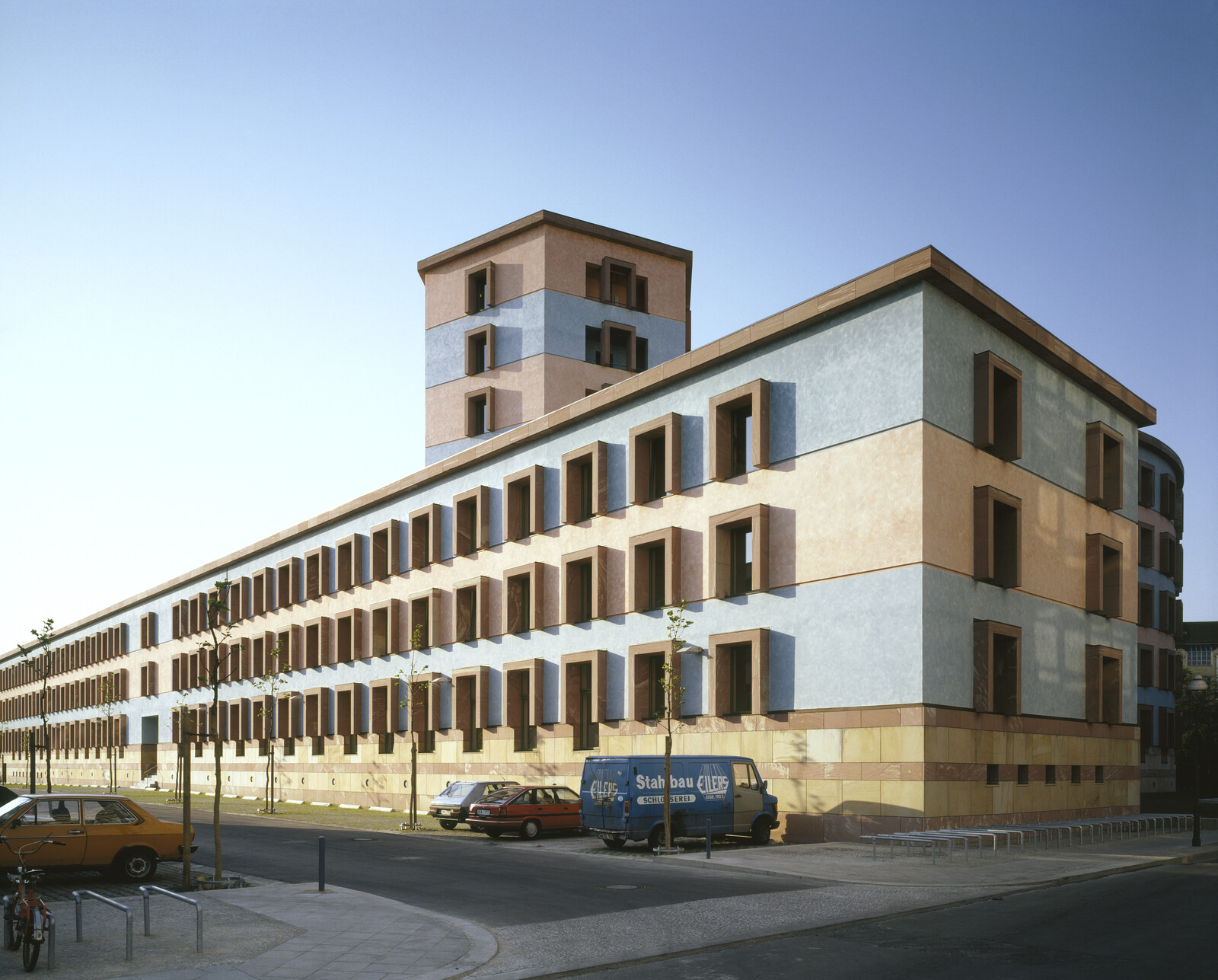


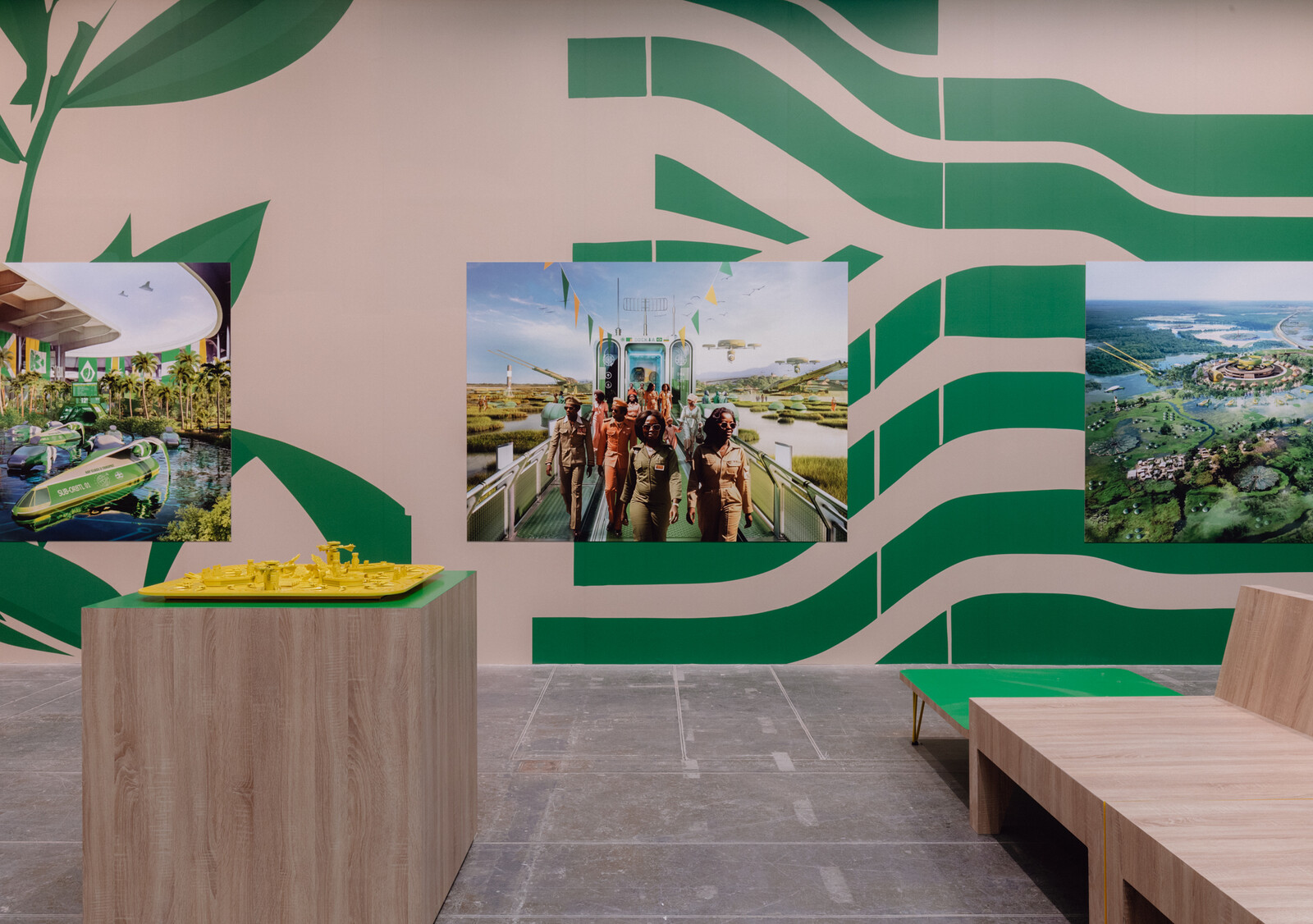




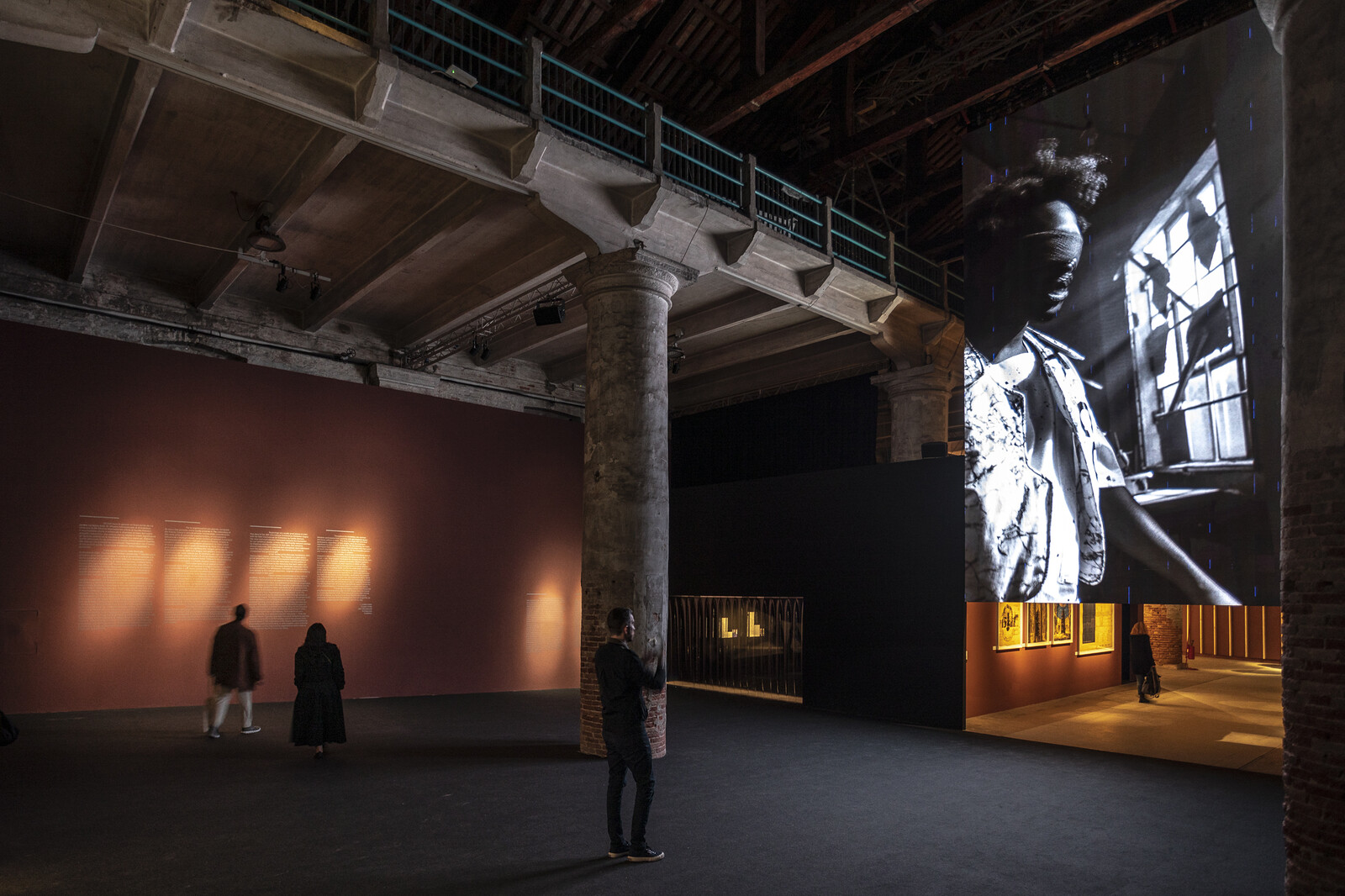







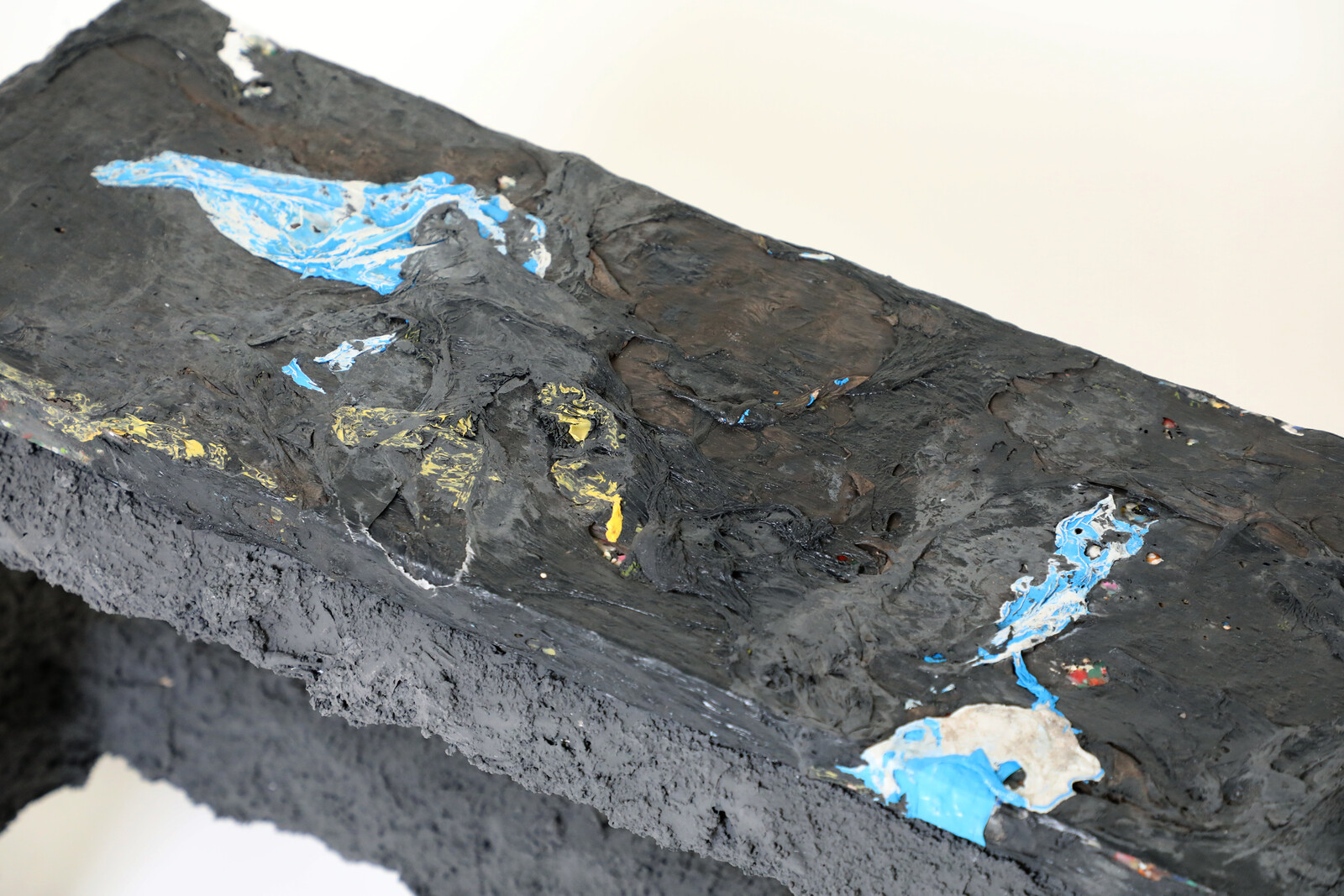





(2014).jpg,1600)










,-2003,-srgb.jpg,1600)





